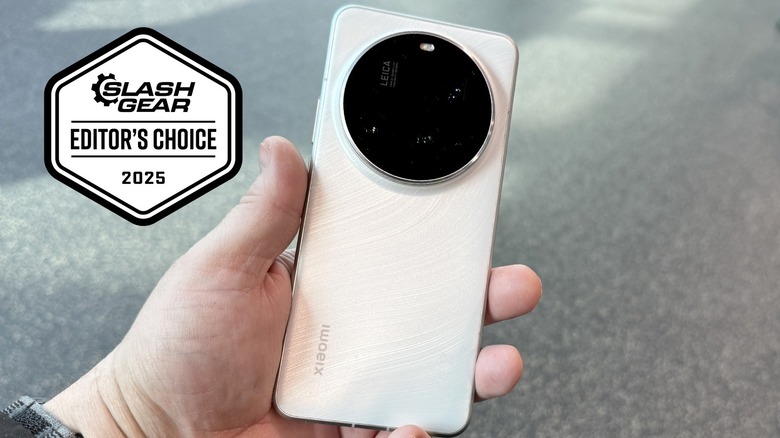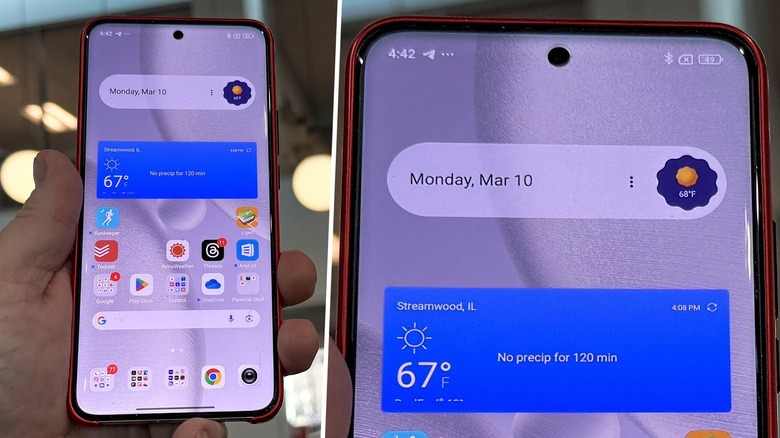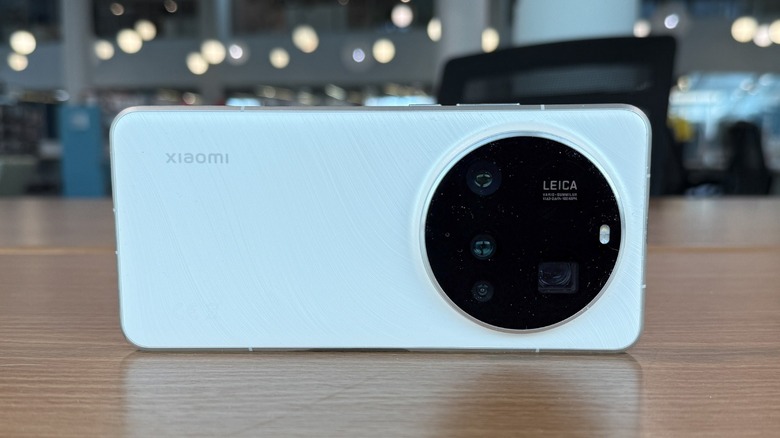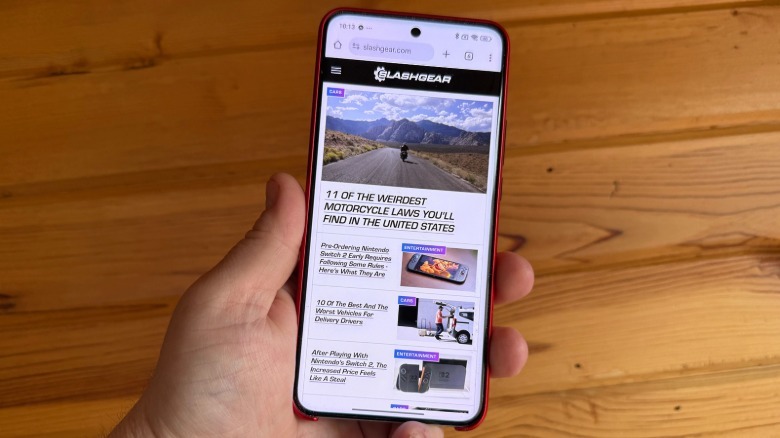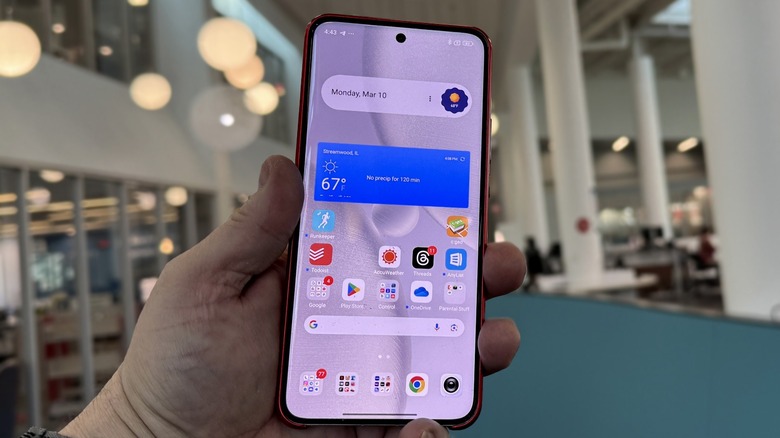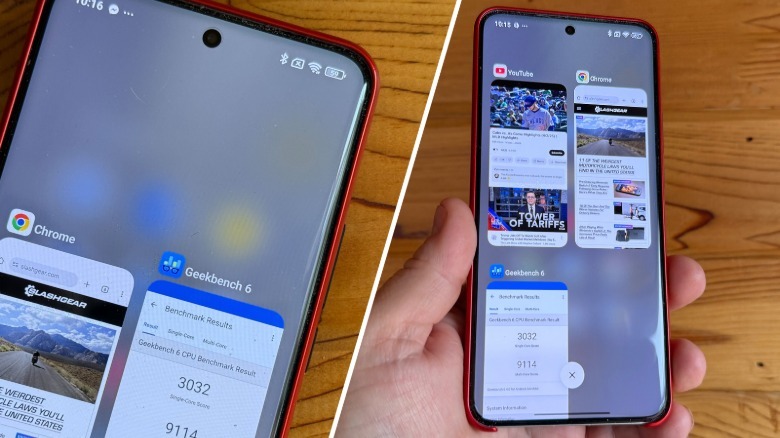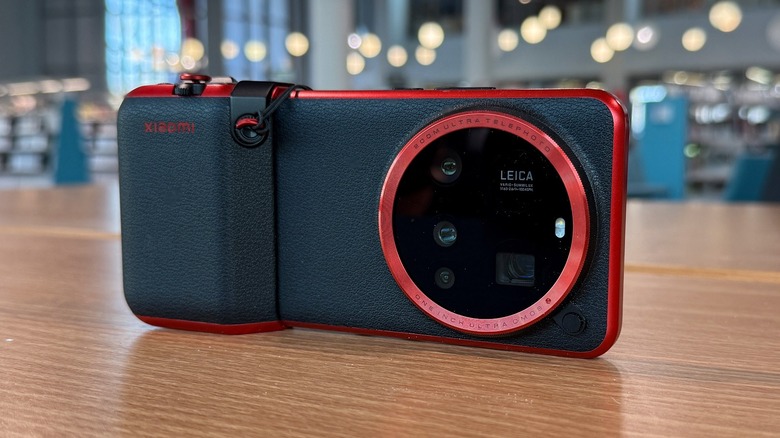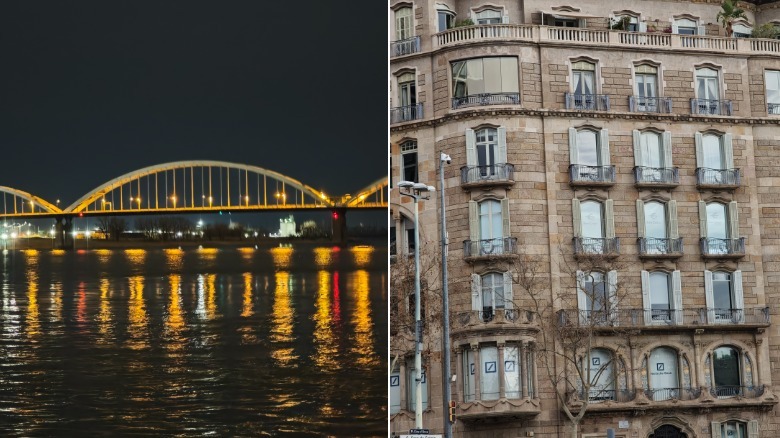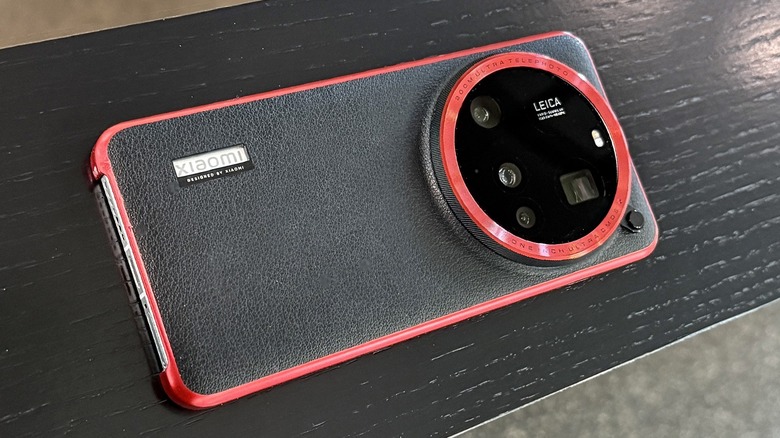Xiaomi 15 Ultra Review: The Best Phone The USA Can't (Officially) Have
- Fantastic Camera
- Beautiful Design (if you're into it)
- Fast processor
- Great battery life
- Legendary accessory kit
- Expensive
- Limited availability
- Software takes getting used to
We may receive a commission on purchases made from links.
Here in the U.S. we have a narrow slate of smartphone to choose from. If you want to buy the best smartphone on the market, it's fairly easy to narrow down your choices between Apple, Samsung, Google, OnePlus, and Motorola. But that's in the United States. Once you go overseas, you find an incredibly wide variety of smartphones to choose from.
At MWC 2025, I got to see a lot of those, including a number of weird features that phones have overseas that are just too cool. I also had the opportunity to check out some phones so good, they came away with an award. One of those was the Xiaomi 15 Ultra. In some ways, this is the best phone I've used in a long time. In others, there's room for improvement. But overall, the Xiaomi 15 Ultra earns its award and its Ultra name, and perhaps more than its U.S. counterpart. I've been using the Xiaomi 15 Ultra (and its official Photography Kit) across Barcelona, my hometown of Chicago, and in rural Moline, IL for about three weeks, and this is my full review.
Outside U.S. alert
Of course, every time we look at phones from companies like Xiaomi, Honor, and others from overseas, we need to start off with the obvious disclaimer. This phone was not built for the U.S., and if you decide to try to import one, your mileage may vary. I used T-Mobile's network both in Barcelona and in Chicago, and in the Quad Cities, straddling the mighty Mississippi, and I had no connectivity issues.
I was curious, actually, to see how the phone would perform in a more rural setting, so when I stepped off the plane in Moline, I was happy to see I was still connected. Don't get me wrong, Quad Cities isn't rural with a capital R, but it's decidedly in "small town" territory, so I was a bit nervous. During my time in Moline I had great connectivity for voice and data, and I actually noticed my iPhone 16 Pro Max dropping out more often than the Xiaomi phone. Take that for what it's worth.
Will the same be true on AT&T, Verizon, or a slew of other MVNOs? Who's to say? Proceed with caution. But if you've gotten over that hurdle, this is what you'll find.
Unsubtle Hardware
The best way to describe the hardware on the Xiaomi 15 Ultra would be divisive. This is the kind of phone design that you'll probably either love or hate, with little in between. That being said, there's an accessory we'll discuss later that should move even the staunchest hater into the "love it" category.
Phones today are almost famous for their prominent camera bumps, and the Xiaomi 15 Ultra is no exception. Indeed, the camera bump on the back of the phone takes up almost the entire upper third. It's there that the quad camera setup resides. We'll discuss cameras a little later, but this phone earns that bump in spades.
The back is further accentuated by a marble white pattern (as reviewed) which really adds a lot of character to the device, though it is slippery. There's also a bit of branding on the back with the Xiaomi and Leica names on the backplate and camera module respectively. Overall, I find it to be an attractive phone, though your mileage may vary.
On the front, you have a more typical candy bar design with a 6.73-inch LTPO AMOLED display that is just gorgeous. The display refreshes up to the typical 120Hz and very bright 3200 nits.
Inside, you get the Qualcomm Snapdragon 8 Elite processor, 12 of 16GB of RAM and storage ranging from 256GB up to 1 TB. There's also a 5410 Li-Ion battery that charges up to 90W wired, or 80W wirelessly. As is usually outside of the U.S. the phone ships with a charging plug in the box, though it's a global plug, not U.S. naturally.
HyperOS takes some getting used to
Xiaomi's HyperOS 2, which is based on Android 15, is not a standard build of Android by any stretch. There are a few idiosyncrasies you'll need to get used to in order to successfully navigate this phone. The most notable departure from standard Android fare is the lack of a double press the power button to launch the camera. That's a little on the annoying side but again, that's fixed with the accessory we'll talk about shortly.
The multitasking arrangement is also vertical with two apps side-by-side in a column, rather than the horizontal arrangement you might be used to. Dismissing apps requires a side swipe. That bends you brain when you first run into it, but you can quickly adapt.
The last major departure from Android is actually fairly typical in Chinese operating systems — aggressive task management. Specifically, the operating system loves to close apps and put them to sleep. I paired the phone with my Amazfit Bip 6 for most of my review period, and notifications only worked sporadically. I can't be positive that the phone was to blame, but it seems likely given the frequency of the trouble.
Assuming you manage to purchase a global variant of the phone, Google services will run just fine, so there's no need to worry on that account. I didn't hit any significant hiccup during my review period even though I didn't come into it with a ton of experience with Hyper OS.
Legendary Accessory
In addition to the 15 Ultra phone itself, Xiaomi also sent over the Professional Photography Kit "Legend Edition" and dear reader, this kit takes this phone to the next level in a number of ways. The core of the kit is a red and black polycarbonate and vegan leather case that sharpens up the look of the phone greatly. The Xiaomi branding on the back of the phone shows through a cutout in the back of the case which serves a second purpose.
The real treat of the kit in the camera grip module that attaches to the phone, gives in extra power, and makes the phone easier to hold and snap photos. There's a switch on the camera grip that locks it to the case by pressing a latch into the cutout for the branding. It's quite clever.
The phone case and grip accessory have different accent rings and buttons you can swap out to your taste. I went with the red accent ring around the camera bump and the red button on the camera grip, but beware — the accent button only screws onto the grip case and early on, it had a tendency to unscrew itself and fall off. I almost lost the button on the street in Barcelona when I pulled the phone out of my pocket and found it missing. Fortunately, I was able to retrace my steps and locate it.
The camera grip has a shutter button, a zoom switch and an additional, configurable wheel that you can use to adjust focus, exposure or a few other settings. As a bonus, the camera grip fits perfectly on the Nothing Phone (3a) Pro and the shutter button and zoom functions work perfectly.
Cameras are mind blowing
If you want to know who makes the best camera set I've seen on a phone so far, you're reading the review right now. Put simply, these cameras are phenomenal in just about every respect. First, let's talk about the hardware, because there is...a choice here.
The cameras on the back are all 50-megapixel shooters except for one. The main camera, ultra wide camera, and 3x telephoto are all really solid and take great photos with excellent color and bokeh. The last camera is a 4.3x 200-megapixel camera which is not typically for phones you'll find in the U.S. The benefit is that this camera can zoom quite a bit with very little loss in quality. Which makes the camera system very versatile.
As a parent with a child in soccer, that's huge for me. I was taking snapshots of my daughter on the soccer field at 20x or even 30x zoom and getting regularly blown away by the results. They get a tad fuzzy when blown up to full size, but if you want something for Facebook, this will absolutely do the job.
That same is true for landscape photography in places like Chantilly, France. I loved that I could stand basically anywhere I wanted to and get the photo I wanted, with the confidence that it would turn out just as good as the main camera as often as not.
It wasn't always perfect, particularly in low light, but it was very solid to the 4.3x range and even beyond. You just don't get that kind of reliability in a smartphone camera.
Night time photos
The only time that came into question was at night, and even then, you were pretty good until you tried to stretch beyond 4.3x optical zoom. But even past that point, it was more like a 50/50 proposition that you'd end up with a good photo. I can't say enough good things about these cameras in low light.
Even video is...ok. Video in low light is not bad, but also not great. You still get judder with footsteps if you're walking and shooting. There's also a bit of grain in the darker area, though it's not as bad as it could be. The major issue is when you're walking and shooting without a subject in the frame, but I have yet to find a phone that doesn't struggle with that.
But overall, these are the best cameras I've used and that alone is enough to make me consider just sticking with this phone as a long-term daily driver. It's simply that good.
Battery and performance
The Snapdragon 8 Elite processor in this phone is just as good as the other phones we've reviewed with the same processor. Put simply, it flies. On Geekbench, the phone clocks in at 3,032/9,114 single and multi-core scores respectively The RAM also helps boost the performance so titles like "Call of Duty: Mobile" and "Asphalt Legends" run perfectly. I'm still smitten with the Snapdragon 8 Elite, and I don't see that letting up anytime soon.
As for battery life, as mentioned, the phone comes with a 5,410 mAh power cell which is already large by today's standards. The phone easily lasts for two days when I'm working from home and even has no problems lasting a full day of hard work loads like a trade show floor or long international flight. Plus, the phone charges fast enough so you don't even have to worry about overnight charging. It's simply delightful.
One irritation I noticed was the fact that you can't charge the Legend camera grip and the phone at the same time. Results were inconsistent, but most of the times I tried, the charger would charge the grip, but the phone would remain stuck at its charge level, and I'd wake up with a half-charged phone in the morning. I'd like to see a charger pass charge one and then the other, though whether that's the grip first, then the phone or vice-versa doesn't particularly matter to me.
Xiaomi 15 Ultra Price, Availability, and verdict
Of course the tricky part is the availability (though the price raises eyebrows too) which is to say, it's hard to get. AliExpress is the only current retailer where you'll be able to find it (unless they find a way to drop it in the Xiaomi Amazon store, but good luck). Meanwhile the price tag of $1,449.42 is enough to give one pause as well. That's compounded by the questionable nature of its U.S. performance. All that being said, this is a great phone in basically every way a phone can be great. From the design to the performance to the camera, this phone stands above anything you can find in the states.
But yeah, it comes with a massive price tag as well, and that's not nothing. Most of the phones its competing with are around the $999 mark, and this adds another half on top of it. Objectively, this phone is worth it because of all the aforementioned value. But it's still an eye-watering price, especially coming from a company whose reputation is frugal.
But this is arguably the best phone you can buy in 2025 at this price. But whether that's worth the extra money (and inconvenience) is a question you'll have to answer for yourself. The Xiaomi 15 Ultra is as premium a smartphone as you can find, and it has a price tag to match.
